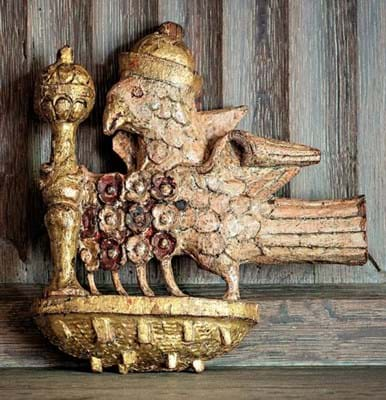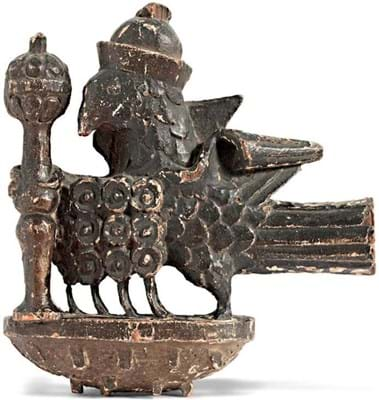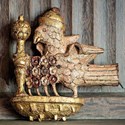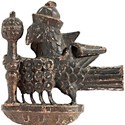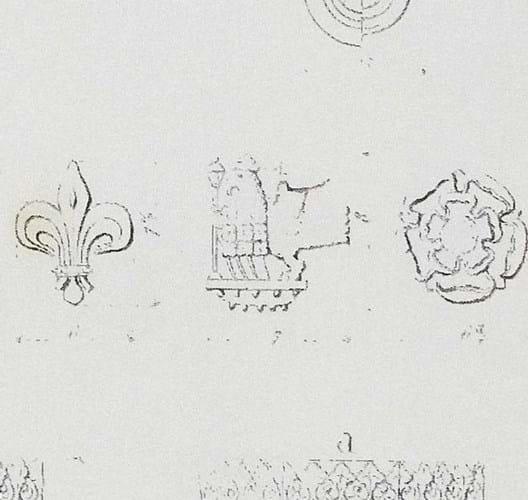Paul Fitzsimmons of Marhamchurch Antiques in Devon spotted the blackened wooden bird at an auction in late 2018.
Following research, he believed the mount must be linked to Boleyn. It is now being reviewed by Historic Royal Palaces and if it is accepted will go on long-term loan at the palace.
However, the process to examine its provenance has been far from smooth.
Fitzsimmons purchased the falcon (as well as four other lots) from the deceased estate of an unnamed antiques dealer. Although the dealer believed it to be Tudor and it featured a royal sceptre and crown, further research had to be done to match the object to an architect’s drawing of a near-identical falcon. The drawing, discovered online, dated from when AWN Pugin surveyed Hampton Court in the 1820s and was published in Specimens of Gothic Architecture of 1821-3 (pictured).
Following this discovery Fitzsimmons contacted his friend, oak specialist David Houlston who was at Bonhams (and now at the Bishop & Miller saleroom in Suffolk), and after further research it was offered at Bonhams’ oak sale in Oxford on September 18 2019, with an estimate of £50,000-80,000 (as previewed in ATG No 2407). However, it did not sell.

The falcon being cleaned and analysed by specialist Ian Crick-Smith.
Subsequently Fitzsimmons employed experts Ian and Michael Crick-Smith of Crick-Smith who specialise in paint analysis and conservation of paint, gilding and decorative finishes.
The project cost £15,000 but the original paint was discovered still intact under layers of soot and wax.
Around the same time, Fitzsimmons was speaking to a client in the US who was buying a Tudor coffer from him and mentioned the falcon. The client, author Sandra Vasoli (who has written fictional books on Anne Boleyn), put him in touch with founder of The Anne Boleyn Society James Peacock and Tracy Borman, Tudor historian and joint chief curator at Historic Royal Palaces.
Fitzsimmons said: “I believed that dendrochronology would be too invasive on such a small item but we have now found out so much about this falcon, from who may have made it to where the timber came from.
“I believe it is now worth beyond £200,000. I hope it will go on full long-term loan to Hampton Court with an option for them to purchase it in future.”
Borman said: “I first heard about the falcon when I was writing my book, Crown & Sceptre: A New History of the British Monarchy [out now] and was delighted to be able to include it in the narrative. Anne Boleyn is by far the most popular of Henry’s six wives yet so little evidence of her life remains, thanks to Henry ordering that every trace of her be removed after her fall from grace in 1536.
“This falcon is therefore a rare and incredibly exciting find and I very much hope we will be able to bring it back to Hampton Court for display one day.”


